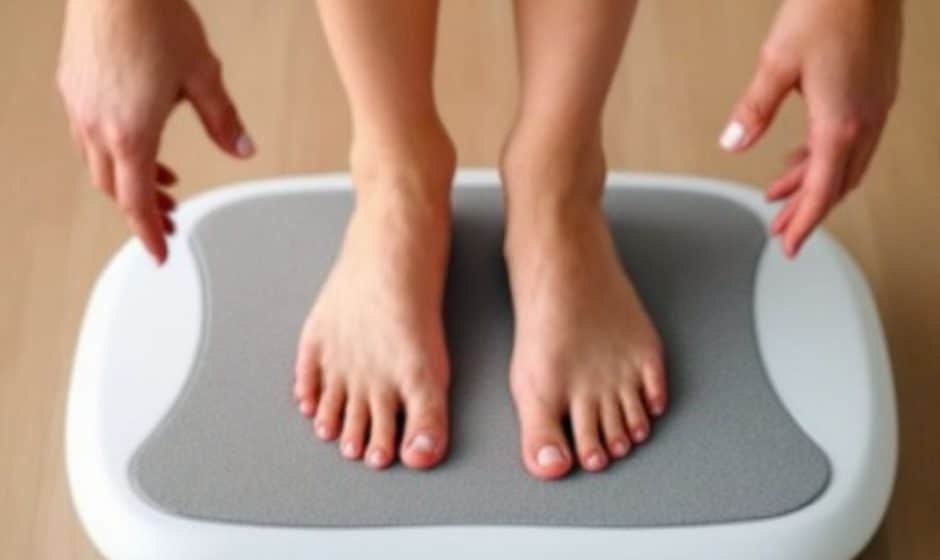Hey there! Have you ever thought about how essential toe flexibility is in our daily lives? Maybe you haven’t given it much thought, but trust me, it’s something that can change the way you move—and even how you feel overall. Foot flex, as I like to call it, is a game-changer, but it’s often overlooked compared to other fitness trends. Today, I’m here to dive into why keeping our toe flexibility in balance is more crucial than you might think. So, let’s get started!
Why Toe Flexibility Matters
Now, you might be thinking, “But why focus on toe flexibility?” Well, let’s be honest. Feet aren’t the first thing most people think about when it comes to flexibility and fitness. Instead, it’s more about those flashy mobility exercises that aim for wow-factor flexibility.
But here’s the kicker: your toes literally support your entire body. Without proper toe mobility, even simple tasks like standing, walking, or running can become tense and biomechanically inefficient. The key here—yes, you guessed it—lies in finding a healthy balance in foot flex. When you ensure good toe flexibility, you’re essentially setting your feet, and thus your entire self, up for success.
Common Problems Caused by Poor Toe Flexibility
Poor toe flexibility can throw a wrench into even the best of fitness regimes. If your toes don’t move well, you’re looking at potential issues like:
- Balance Problems: Unfortunate but true, if your toes are stiff, balancing on one foot can be a struggle.
- Shoe Discomfort: Tight shoes and no ability to move your toes spell painful walking experiences.
- Gait Issues: Don’t underestimate how calming regular steps can feel. Toe stiffness disrupts this rhythm, often putting extra pressure on other joints.
- Plantar Fasciitis: It’s fancy talk for a very painful heel injury. Just imagine needles poking into your heels. Ouch!
Symptoms That Signal Need for Better Toe Flexibility
Before diving into solutions, let’s confirm, shall we? What are some signs that signal your toes might lack flexibility?

- Experiencing difficulty while picking up things with your feet.
- Struggles with balance exercises.
- Frequent foot cramps or feelings of tightness.
- Pain at the joint of the big toe during motion.
Sound familiar? Don’t worry—I’ve got some nifty stuff up my sleeve, aimed at helping you figure this out!
Easy Exercises to Enhance Toe Flexibility Balance
Alright, stepping closer to solutions here. Let’s discuss simple exercises. You’ll be surprised at how these work wonders for your feet. Remember, the goal is improvement, not to become a contortionist. Progress is progress, even if it’s slower than you desire.
Toe Stretches
- Seated Toe Stretch:
- Sit comfortably in a chair. Take your left foot and gently pull back on the toes aiming for a stretch down the bottom of the foot. Hold it there for 10 seconds, repeat on the right foot. Voila—easy and effective.
- Towel Scrunches:
- Place a small towel on the floor under your feet. Use your toes to scrunch it towards you. Aim for 5 minutes. It’s harder than it sounds, but you’ve got this!
Marble Pick-Up
True story: marbles can be so much more than childhood toys. Scatter some on the ground, use your toes to grab them, and place them in a bowl. Works like charm for toe coordination and strength!
Toe Lift and Spread
Lift all your toes off the ground, spread them as wide as you can (like a fan, you know?), and then lower them one by one back to the ground. It’s pretty neat for foot control and strengthening.
The Role of Balance in Our Lives

Okay, a brief detour to how toe flexibility supports balance. Imagine maintaining a steady yoga pose or feeling solid walking on uneven surfaces. Balancing isn’t just about looking graceful—it’s about stability and preventing falls too! Remember, our toes are our secret unsung stability heroes.
Integrating Balance with Turned-on Toes
Let’s not overthink. Try these simple balance enhancers to engage your toes effectively:
- Heel-to-Toe Walk:
- Pretty straightforward. Take a step forward with one foot, and place the heel directly in front of the toes of the back foot. Repeat and keep that core tight!
- One-Legged Stand:
- Hey, ever tried standing like a flamingo? Give it a shot! Stand on one leg with toes gripping the ground, switch sides. Start small and build from there.
Incorporating Balance Boards or Discs
Add a balance board or disc into your routine for an extra challenge. Position yourself evenly, focus on rocking back and forth without falling. Feels like fun—almost like being a kid on a seesaw!
Addressing Hormone Regulation and Feet Health
Now, let’s sneak in a bit of talk about hormone regulation. Bet you weren’t expecting that in a toe article, huh? But it’s intriguing how hormone levels can affect so much, including joint and tissue health, indirectly influencing foot function.
Sometimes, hormonal imbalances can worsen inflammation—a huge baddie when it comes to restraining foot health. But there’s a silver lining. When hormones align right through lifestyle choices and nutritionally balanced diets, it can rejuvenate soft tissues. Makes sense when you think of hormone regulation and its profound impacts on the body. So nourishing your insides is quite the long game for toe flexibility.
Keeping Your Feet in Top Form: Everyday Considerations

Kicking it with real talk: shoes. While they may seem like unforgiving structures sometimes, soaked in history of restricted foot movements, choosing the right footwear means a lot for toe health. Here’s what you need to know:
Choosing the Right Shoes
- Toe Room: Search for shoes with enough width to comfortably wiggle those toes.
- Flexible Sole: Allows the natural curvature movement of the foot.
- Avoid Heels: Sorry heel lovers, but the tighter the fit, the more constraint on toe work.
Try Going Barefoot Sometimes
Barefoot walking isn’t just for beaches! Let feet experience natural movements and varying surfaces. Chakra-aligned yoga teaches us how barefoot sensations align us more viscerally to the world we tread softly across.
Consult Pros When Needed
Although we cover DIY approaches, therapists or podiatrists grace us with expertise uniquely tailored for any worries your feet care to whisper. Trust me on this one; sometimes getting a professional’s perspective can solve issues lurking heavily.
Strengthening Habits Over Time
Be kind to yourself, will you? Rome wasn’t built in a day, and neither are flexible toes. Gradual enhancements become habit-forming, leading to improved foot and body dynamics. Seriously, forging these habits ensure toe equilibrium stays a constant ally rather than a pesky foe.
Takeaway Thoughts on Embracing Toe Flexibility
So, there it is—every reason you need to prioritize toe flexibility and foot health, all in one relaxed, slightly rambling chat. Every step peeled open layers of guidance ready to transform the humble foundation on which you stand. When toe mobility syncs up with balance, the simple pleasure of walking and exploring takes fresh glory!
Engage with your toes as undercover muscles crying out for friendly finessing. Remind yourself to wave goodbye to commonplace footinflicted grievances. Always remember—life feels differently smoother when toes dance joyfully beneath us. Go ahead, stretch them toes out. You, my friend, were born to enjoy every footfall on this earth effortlessly.
Frequently Asked Questions
What causes a hormonal imbalance?
A hormonal imbalance can be caused by natural changes or stages in your life, including puberty, pregnancy, perimenopause, and menopause. Other causes include partial or full hysterectomy, tumors, adenomas, and autoimmune diseases that affect the endocrine glands[3][5].
How does hormone replacement therapy (HRT) work for hormone regulation?
Hormone replacement therapy works by topping up or replacing missing hormones. During perimenopause and menopause, levels of oestradiol, progesterone, and sometimes testosterone decline. HRT involves prescribing these hormones, often in the form of patches, gels, sprays, or pills, to improve symptoms and future health outcomes[1][3].
What are the common symptoms of a hormonal imbalance?
Common symptoms include irritability and fatigue, mood swings and depression, skin dryness and loss of elasticity, water retention and weight gain, osteoporosis and joint pain, less interest in sex, insomnia, and other sleep disorders, as well as memory issues and difficulty concentrating[3][5].
What are the different types of hormone replacement therapy available?
Hormone replacement therapy comes in various forms, including systemic hormone therapy (pills, patches, rings, gels, creams, or sprays), low-dose vaginal products (cream, tablets, or rings), and bio-identical hormone replacement therapy, which is structurally identical to human hormones and may have fewer side effects[1][3].
References




